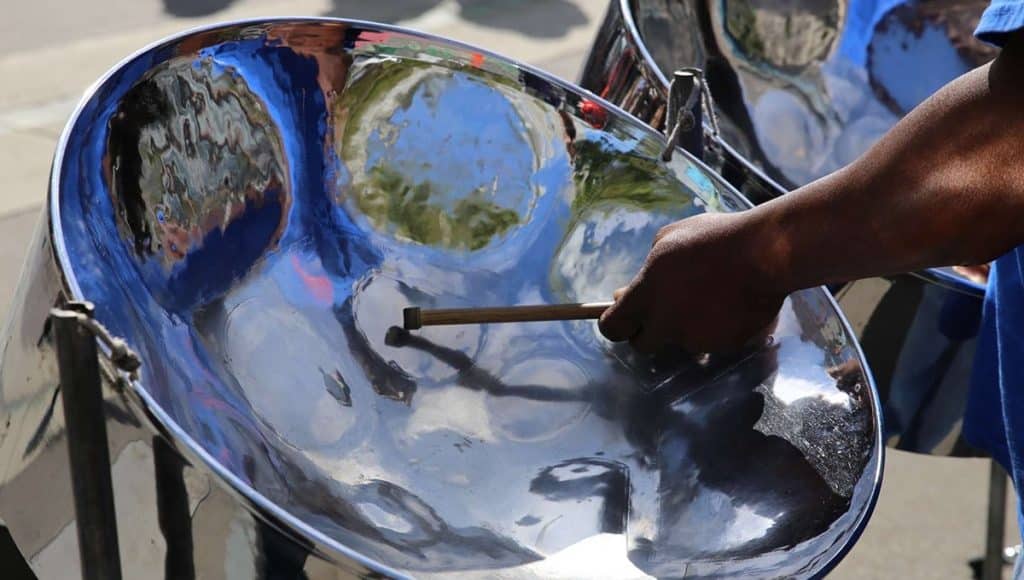The handpan is a relatively new musical instrument, but it has already proved its worth on the international music scene. With its unique, captivating sound, it has already won over many musicians and music lovers from all walks of life. But where does the handpan really come from? What are its origins and what musical influences contributed to its creation? That’s what we’re going to explore in this article.
By going back to the earliest handpan models and examining the impact of different cultures and musical traditions, we’ll discover how this instrument has carved out a special place for itself in the world of music. We’ll also see how the handpan continues to develop and be used in innovative ways in today’s music.
Table of Contents
History of the handpan
The origins of the handpan are controversial, and there are several versions of its history. According to some sources, the handpan originated in the late 1990s, when the Swiss musician Felix Rohner began working on a new instrument inspired by the steel drum, a percussion instrument based on steel drums that originated in the Caribbeans. His aim was to create an instrument that would be more portable and easier to play than the steel drum, while keeping its unique sound.

Their first creation, called “Hang” and produced by the PANArt brand, quickly attracted the attention of musicians and music lovers from all over the world. The handpan then took off, with many other manufacturers starting to produce the instrument. Today, the handpan is played in a wide range of musical styles and has become a staple instrument on the international music scene.
Nevertheless, there’s no denying that the handpan is a fascinating instrument that has carved out a place for itself in the world of music thanks to its unique sound and versatility. It continues to evolve and adapt to different musical influences, making it an exciting instrument to discover.
Development and popularity of the handpan in the 2000s
In the 2000s, the handpan experienced a real boom in popularity. Many musicians and groups began to use this instrument in their compositions, bringing it to the attention of their audiences. Thanks to the internet and social networks, the handpan was discovered by an even wider audience, contributing to its growing popularity.
Numerous music festivals have also incorporated the handpan into their lineup, bringing the instrument to the forefront of the international music scene. Handpan groups have begun to perform in concert and tour the world, offering audiences the chance to discover this instrument in a more immersive way.
The handpan has also been used in many different situations, from relaxation music to electronic music and traditional music. Its versatility and ability to adapt to a wide range of musical styles have contributed to its growing popularity.
Nowadays, the handpan is an instrument that is recognised and appreciated all over the world, and its popularity shows no signs of waning. With new brands and manufacturers regularly appearing on the market, the handpan is a constantly evolving instrument that is still exciting to discover.
The influence of musical traditions on the handpan
The handpan is an instrument that has been influenced by many different cultures and musical traditions. In fact, its unique sound and expressive possibilities make it an ideal tool for fusing different musical styles.
The first handpan models were inspired by the steel drum, a percussion instrument that originated in the Caribbean. This influence is still present in most of today’s handpans, which have tones similar to those of this Caribbean instrument.
But the handpan has also been influenced by other musical traditions, such as Indian and Arabic music. Many musicians have explored the expressive possibilities of this instrument by using playing techniques borrowed from these traditions. The handpan can be used to play complex melodies and hypnotic rhythms, while keeping its unique sound.
In addition, the handpan is often played in improvised music situations, such as jam sessions or world music concerts. Its versatility and ability to adapt to a wide range of musical styles make it an ideal tool for improvisation and the live creation of melodies.
To conclude
In short, the handpan is an instrument that has been influenced by many musical traditions and has drawn on the best of them to create a unique and exciting sound. Its versatility and ability to adapt to a wide range of musical styles make it a particularly complete and versatile instrument.